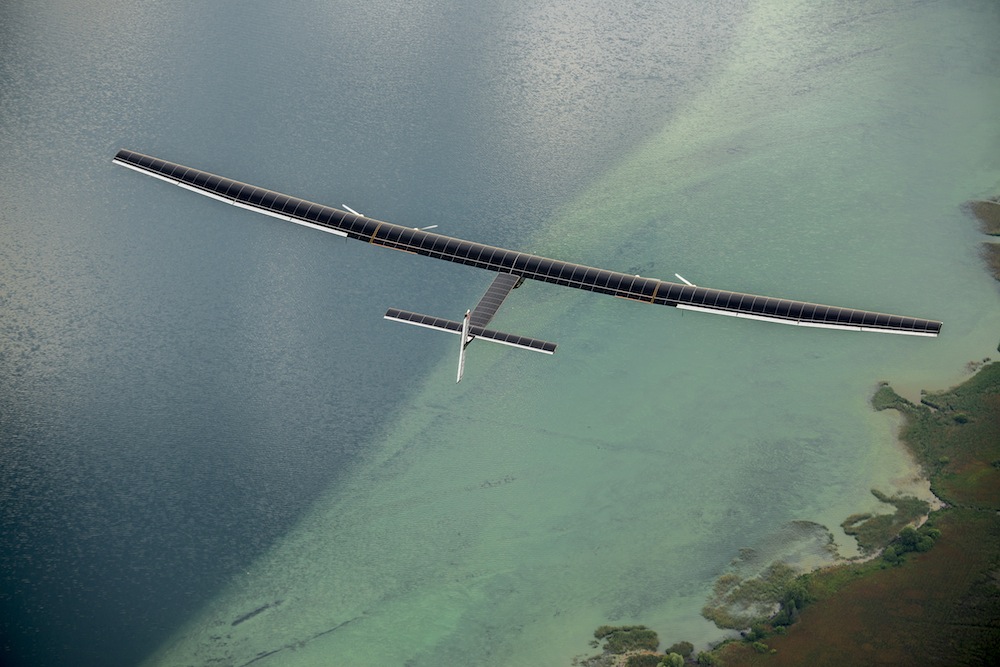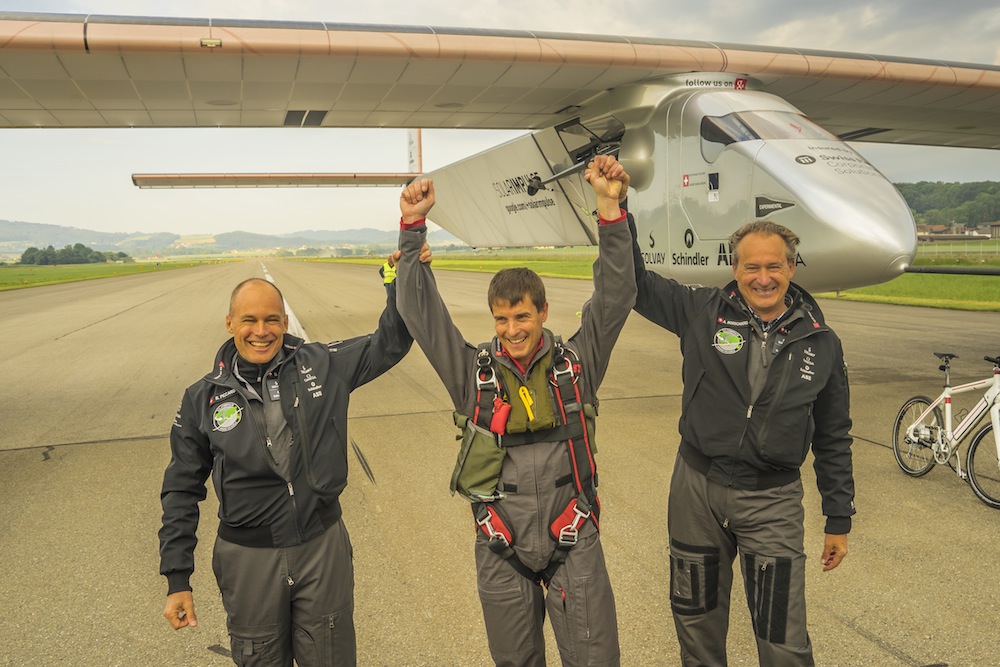'Round-the-World' Solar Plane Takes First Flight

The Solar Impulse 2, an aircraft powered entirely by the sun, successfully completed its maiden voyage today (June 2).
The plane launched soon after sunrise from the Payerne Air Base in northern Switzerland, trailed by a helicopter that recorded its flight. Pilot Markus Scherdel flew the experimental, single-seater craft for 2 hours and 17 minutes, before landing it successfully. The ultimate goal is to fly the solar plane around the world, said Solar Impulse CEO André Borschberg
"This inaugural flight is an important stage — a step closer toward the round-the-world flight," Borschberg said in a statement. "It is also a huge emotional step for the entire team and all our partners who have worked on the aircraft. Si2 incorporates a vast amount of new technology to render it more efficient, reliable and in particular better adapted to long-haul flights. It is the first aircraft which will have almost unlimited endurance." [Video: Watch the Maiden Voyage of the Solar Impulse 2]
Sun-powered flight
Last year, Borschberg and his co-founder, Bertrand Piccard, piloted their first experimental solar plane, the Solar Impulse, from California to New York in five legs. Solar Impulse landed at John F. Kennedy International Airport on July 6, 2013, ending the flight several hours before schedule because of an 8-foot-long (2.5 meters) tear in the fabric on the underside of the plane's left wing. Borschberg and Piccard told Live Science at the time that the tear did not affect the plane's control, and that the solar components and batteries of the plane performed without a problem.
The Solar Impulse plane was powered entirely by sunlight, and had onboard batteries that charge during the day to keep the plane aloft at night.
"It's already amazing to have had so little problems," Piccard told Live Science. "Normally, on a prototype, you make a flight and you have to change a lot of things."
Sign up for the Live Science daily newsletter now
Get the world’s most fascinating discoveries delivered straight to your inbox.
Around the world

The new plane, the Solar Impulse 2, is a long-haul version of the original Solar Impulse. With graceful wings that stretch 236 feet (72 meters), the Solar Impulse 2 carries 17,000 solar cells. Amazingly, despite a wingspan that is longer than that of a Boeing 747, the Solar Impulse 2 weighs about 5,070 pounds (2,300 kilograms) — less than a Toyota Tundra. Piccard and Borschberg unveiled the Solar Impulse 2 in April.
The goal is to complete a round-the-world journey in the plane in 2015. On its maiden flight, the Solar Impulse 2 reached a maximum altitude of 5,500 feet (1,670 meters) and flew an average ground speed of 35 mph (55.6 km/h).
According to the company, the round-the-world flight attempt will take place in the Northern Hemisphere and include stopovers in four or five cities along the way. The city of the launch has yet to be determined.
Follow Stephanie Pappas on Twitter and Google+. Follow us @livescience, Facebook & Google+. Original article on Live Science.

Stephanie Pappas is a contributing writer for Live Science, covering topics ranging from geoscience to archaeology to the human brain and behavior. She was previously a senior writer for Live Science but is now a freelancer based in Denver, Colorado, and regularly contributes to Scientific American and The Monitor, the monthly magazine of the American Psychological Association. Stephanie received a bachelor's degree in psychology from the University of South Carolina and a graduate certificate in science communication from the University of California, Santa Cruz.










